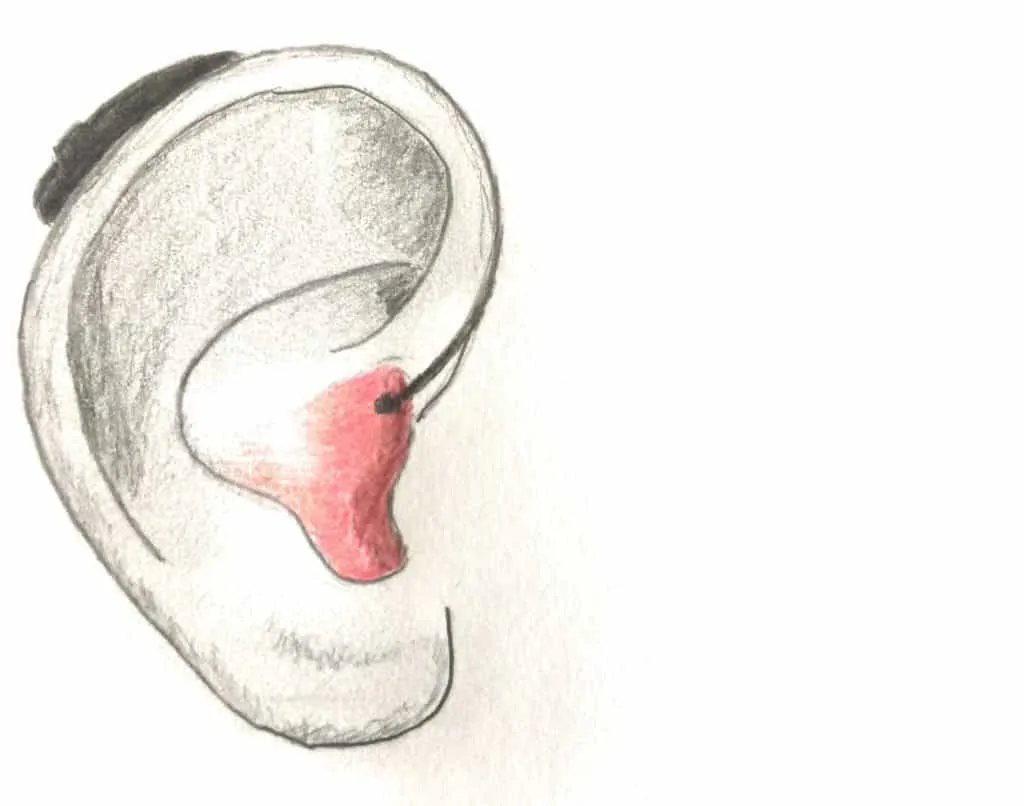This post contains affiliate links.
Hearing aids enhance quality of life for those with hearing loss—but they also introduce new responsibilities. One concern that arises is the potential for ear infections. In this guide, we’ll explore how hearing aids relate to outer and middle ear infections, the signs and symptoms to watch for, and preventive tips to keep your ears healthy.
Understanding the Connection
Hearing aids themselves don’t directly cause infections, but they can contribute to the conditions that allow them to form. This includes moisture buildup, wax accumulation, or insufficient cleaning. Left unchecked, these can lead to either outer ear infections (otitis externa) or middle ear infections (otitis media).
1. Outer Ear Infections and Hearing Aids

Otitis externa, also known as swimmer’s ear, can be more common among hearing aid users due to trapped moisture and debris in the ear canal. Symptoms include redness, swelling, pain, itching, and sometimes discharge.
What to do: Remove the hearing aid temporarily and consult a physician. Keep the area dry and follow prescribed treatments. See our full article on wearing hearing aids during infections.
2. Can Hearing Aids Cause Ear Infections?
Research has shown that ears with hearing aids tend to have higher levels of bacteria and fungi. This study found that hearing aid users showed a significant increase in microbial buildup and canal debris.
Key takeaway: Regular cleaning and maintenance is essential to prevent infections. Use disinfecting wipes like Audio Wipes and clean daily.
3. Middle Ear Infections and Their Impact
Middle ear infections can disrupt sound transmission, making your hearing aids feel less effective. You may notice that your aids feel too quiet or uncomfortable.
Temporarily increasing the volume may help, but contact your audiologist and physician for appropriate treatment.
4. Increased Infection Risk for Hearing Aid Users
The close fit of hearing aids can trap moisture and heat, which promotes bacterial growth. If not cleaned regularly, this can result in ear infections.
Tips: Replace wax filters regularly, use drying capsules, and avoid wearing aids with wet ears.
5. Dealing With an Active Infection
If you suspect an ear infection, stop wearing your hearing aid in the affected ear and consult an ENT doctor. Audiologists cannot prescribe medication but can help assess your hearing once symptoms resolve.
For recurrent infections, you may need to switch hearing aid styles or earmold types. See recommended models here.
6. Recognizing the Signs of an Infection
- Pain or discomfort in the ear
- Itching or irritation
- Discharge (pus, fluid)
- Decreased hearing
- Redness or swelling
7. Preventing Ear Infections While Using Hearing Aids

- Keep ears dry after showering or swimming
- Clean hearing aids daily
- Maintain proper ear ventilation
- Monitor earwax and have it removed by professionals
- Visit your audiologist for regular checkups
8. Cleaning Strategies for Infection Prevention
Use a soft cloth, tissue, or audio wipes to clean hearing aids daily. Clean domes and earmolds per manufacturer instructions. Avoid water and harsh chemicals. Full cleaning guide here.
9. What to Do When You Have an Ear Infection
- Temporarily stop wearing your hearing aids
- Keep the infected ear dry
- Follow all medical treatment plans
- Communicate with your audiologist
- Resume use only after full recovery
FAQs
Can hearing aids cause ear infections?
No, but they can contribute to infections if not properly cleaned or maintained.
What should I do if I get an ear infection?
See a doctor, stop using your aids temporarily, and keep the ear dry.
How do I prevent infections while using hearing aids?
Clean them daily, dry your ears, and schedule regular checkups.

